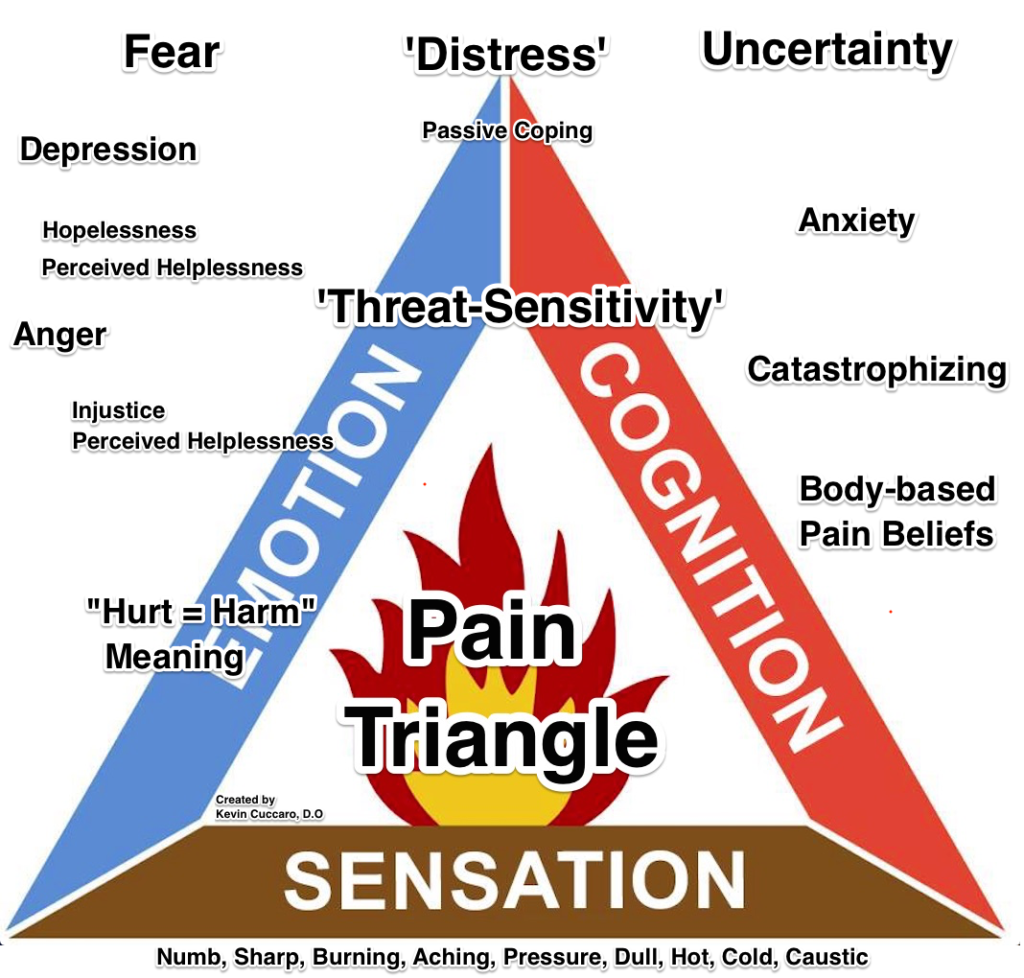Pain and Assessment Tools
How we think about pain is changing. In the recent past, pain was referred to as the "fifth vital sign". With the development of pain science knowledge, more providers are considering pain as an experience that can be complex, measured and treated in multiple ways. This diagram from Dr. Cuccaro represents cognition, sensation, and emotions as the fuel for the "pain experience".

This video provides a five-minute summary of explaining pain as an experience and may expand your understanding of how physical therapy providers and others are talking about pain:
There is a variety of general-to-specific methods of measuring and documenting pain. Next week, you have an essay on the clinical application of pain scales. A few are included in your text, and I have linked some additional, standardized assessment tools for pain in the table below. Standardized measures can be very powerful tools to document changes in quality of life and in functional activities as a result of physical therapy. Progress and declines (regressions) are easily supported by changes in pain measures.
You can prepare for your essay assignment and for the exam/lab by completing the following table
|
Assessment Tool |
Advantages |
Disadvantages |
|---|---|---|
|
Visual Analog Scale (VAS) |
|
|
|
Faces Pain Rating Scale |
|
|
|
|
|
|
|
|
|
When you were observing therapists at the clinic, how did therapists gather information about pain? Think about age, culture, cognition (thinking), time, relevance, and function.
![]()
![]() (links to podcast) All of the assessment tools listed above are used to collect data about pain. Could you explain to your supervising PT why you selected a particular tool? Critical thinking wtih decision-making is demonstrated by your ability to provide a rationale for your choice that is patient-specific and evidence-based.
(links to podcast) All of the assessment tools listed above are used to collect data about pain. Could you explain to your supervising PT why you selected a particular tool? Critical thinking wtih decision-making is demonstrated by your ability to provide a rationale for your choice that is patient-specific and evidence-based.
toc | return to top | previous page | next page

